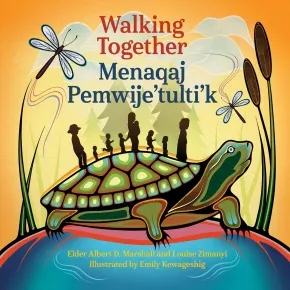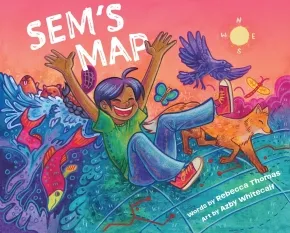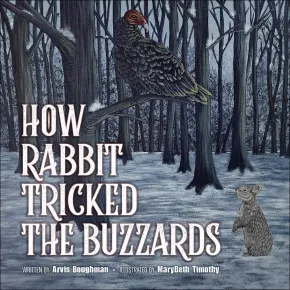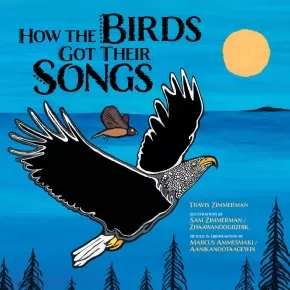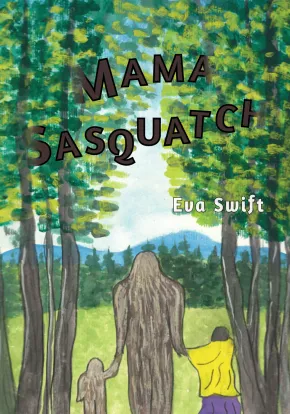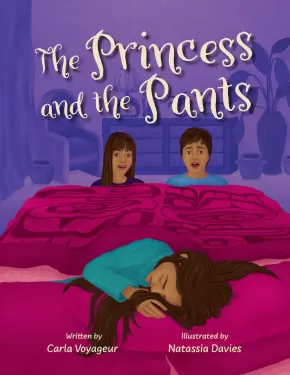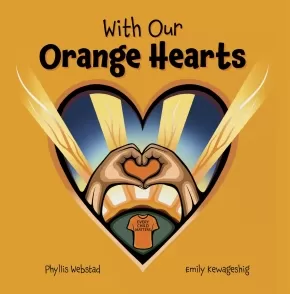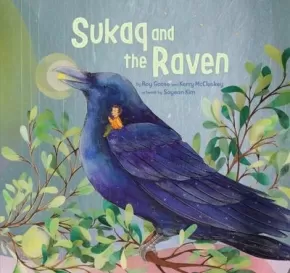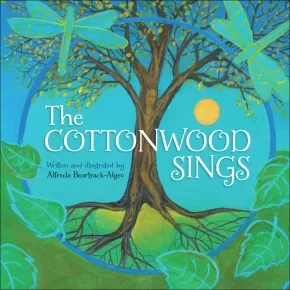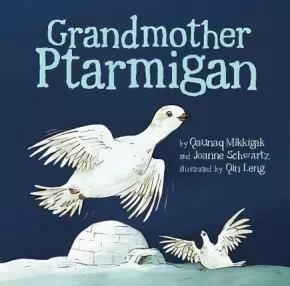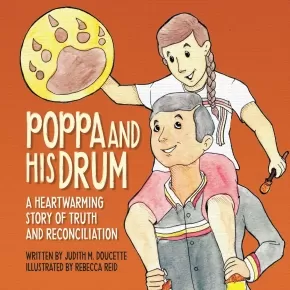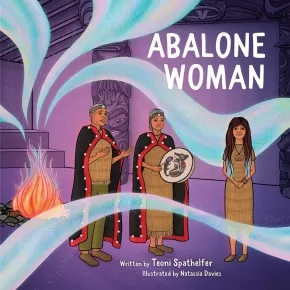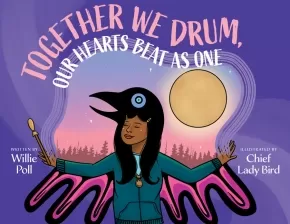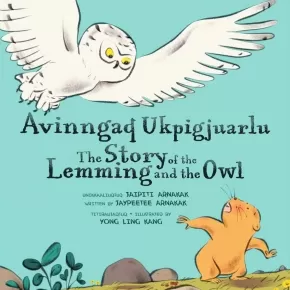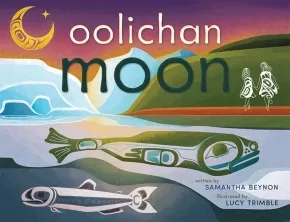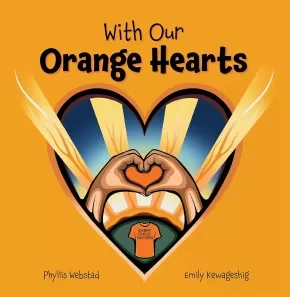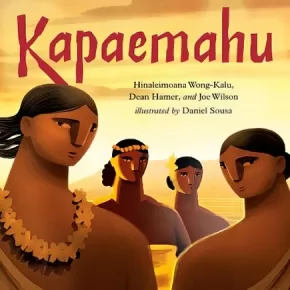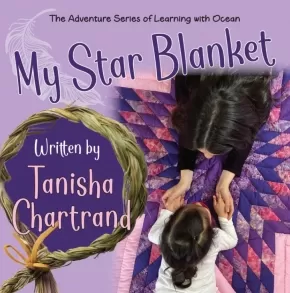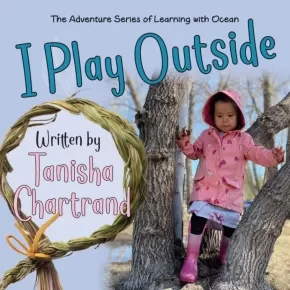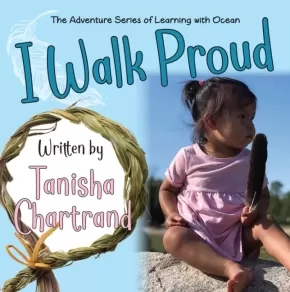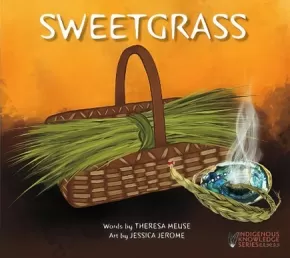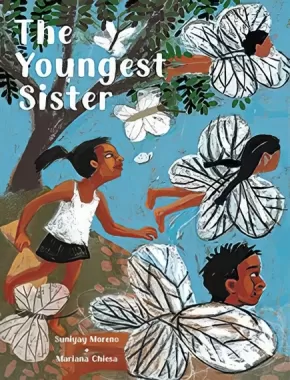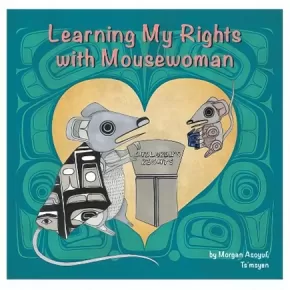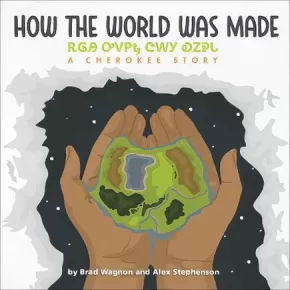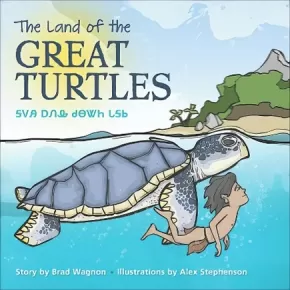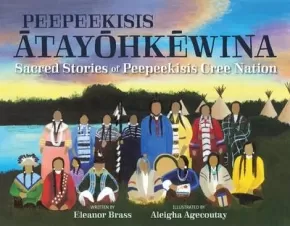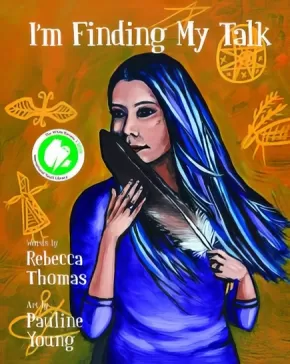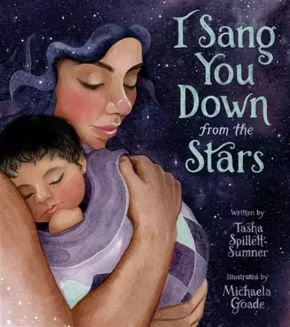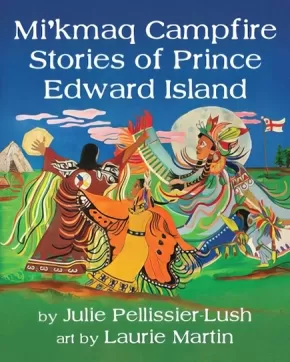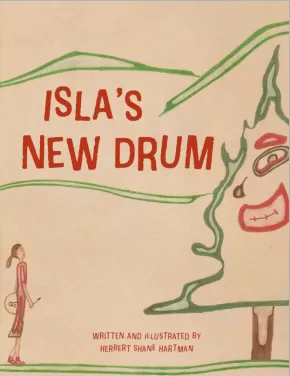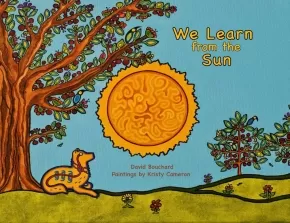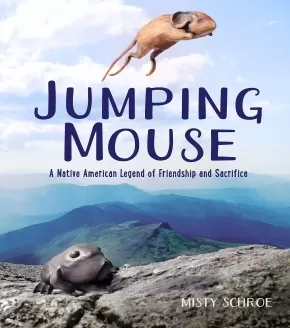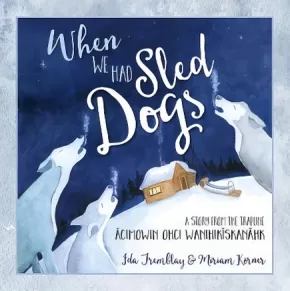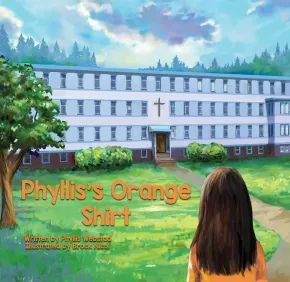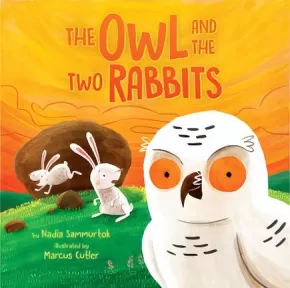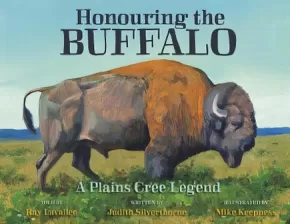
Indigenous Stories / Narratives
1
-
15
of
60 Results;
Sort By
Go To
of 4
Walking Together / Menaqaj Pemwije’tulti’k
$24.99
Format:
Hardcover
Text Content Territories:
Indigenous Canadian; First Nations; Mi'kmaq (Mi'gmaq);
ISBN / Barcode: 9781834020174
Synopsis:
Synopsis:
This bestselling and award-winning introduction to Etuaptmumk—the gift of multiple perspectives also known as Two-Eyed Seeing—is now available in a bilingual edition that celebrates the Mi’kmaw language and our connections to nature.
Elder Albert D. Marshall is a leading environmental voice who has brought forward the concept of Etuaptmumk, honoring and braiding both Indigenous and non-Indigenous knowledges and ways of knowing for the benefit of all. Walking Together is grounded in this, as well as in the concept of Netukulimk, meaning to protect Mother Earth for the ancestors and for present and future generations. The journey in Walking Together nurtures respectful, reciprocal, responsible relationships with the Land and Water, with plant life and animals, and with other-than-human beings.
Translated by Barbara Sylliboy and Arlene Stevens, Eskasoni First Nation, Unama’ki (Cape Breton), Nova Scotia, the dual-language text in Mi’kmaw and English furthers Elder Marshall’s lifelong work preserving cultural beliefs and creating a strong vision for his people and for the future. Elder Marshall and Louise Zimanyi are working together to promote Land-based learning through storytelling, an approach that has global relevance for protecting biodiversity, climate action, and resilience. Emily Kewageshig’s evocative artwork illustrates the beauty of connecting with nature and encourages readers to strengthen their relationships to the world around them.
Educator Information
Recommended for ages 4 to 7.
Introduces the concept of Two-Eyed Seeing (the gift of multiple perspectives) to young readers.
Bilingual Edition: Mi’kmaw and English.
This book is available in English: Walking Together
Additional Information
40 pages | 9.00" x 9.00" | Hardcover
Sem's Map
$14.95
Artists:
Format:
Paperback
Text Content Territories:
Indigenous Canadian; First Nations; Mi'kmaq (Mi'gmaq);
ISBN / Barcode: 9781774714966
Synopsis:
Synopsis:
From the author of I'm Finding My Talk comes a candid picture book about the importance of Indigenous place names, and acknowledging traditional lands.
Sem is confused. The map Mr. Trainer has just put on the screen is all wrong. It's the same shape as Turtle Island but it's nothing but boxes and lines, and it's filled with names he doesn't know. There's no reference to the stories of the land his Kiju tells him every night while she braids his hair. But Sem's teacher and classmates claim there's nothing wrong. It's the same map they've always used.
See tries to see the land the way Mr. Trainer showed him, but it just doesn't feel right. Where is the story of how the moose gets his dinner? Or where the fish run in the spring? Or when to tap the trees for syrup?
With the help of Kiju, Sem will show his teacher and his classmates how the stories of the land, the Indigenous place names, are far older than any map.
A gentle calling-in, this assured story from Governor General's Award finalist Rebecca Thomas is paired with colourful, lively illustrations from Azby Whitecalf, as well as colonial and decolonial maps of Turtle Island (North America) for reference. Sem's Map is an invaluable resource for caregivers, educators, and young readers about the importance of acknowledging the traditional lands we live on, and unlearning colonial ways of the past.
Educator Information
Recommended for ages 5 to 9.
Themes / Subjects: First Nations, Indigenous Knowledge, place names, land acknowledgement, decolonization, history, social studies
Additional Information
32 pages | 10.00" x 8.00" | Paperback
Celebrating Potlatches
$21.95
Artists:
Format:
Hardcover
Text Content Territories:
Indigenous Canadian; First Nations; Tsimshian (Ts'msyen); Nisga'a;
ISBN / Barcode: 9781771746564
Synopsis:
Synopsis:
“Papa, what is a Potlatch?”
Inspired by Ts’msyen Chief William Beynon’s historic notebooks on Potlatches in the Gitxsan village of Gitsegukla, Celebrating Potlatches pairs intergenerational storytelling with beautiful illustrations to honour Indigenous traditions. From the award-winning author of Oolichan Moon and the accomplished illustrator of Be a Good Ancestor, this book recounts the 1885 Potlatch ban and the resilience of the communities who fought to keep their traditions alive.
Reviews
“Heartfelt and timely, Celebrating Potlatches gifts readers with cultural teachings through an intergenerational account of Indigenous resilience. This book is a beautiful tribute to the author’s great-grandfather, William Beynon, whose life’s work documenting oral histories of Sm’algya̱x-speaking Peoples and their Potlatches continues to be foundational to our cultural resurgence today.” – Sm Łoodm ‘Nüüsm (Dr. Mique’l Dangeli), Sm’algya̱x language expert and Assistant Professor of Indigenous Arts at the University of Victoria
“This beautiful book shares the importance of community, culture, and identity. As you make your way through the pictures and words, they bring you to an understanding of how important the Potlatch ceremony was and continues to be for Indigenous Peoples.” – Carolyn Roberts, educator, speaker, and author of Re-Storying Education
Educator Information
Recommended for ages 4 to 8.
Through this conversational historic account, readers can learn alongside the narrator as his Papa shares his wisdom about the rich history of the Potlatch.
Curriculum Connections
- Early literacy – listening, reading, and discussing
- Art – traditional Indigenous art, drumming, and regalia
- Social studies – the 1885 Potlatch ban, history of Indigenous Peoples, connection to community
- Social responsibility – uplifting ourselves and others, honouring traditions
- Indigenous knowledge and traditions – traditional teachings, Potlatch ceremonies, intergenerational storytelling
Two free, downloadable lesson plans—one for kindergarten to Grade 1 and one for Grades 2 to 3—provide connections to Social Studies curriculum.
Additional Information
32 Pages | 10" x 8.5" | Hardcover
Askemawso
$14.95
Format:
Paperback
ISBN / Barcode: 9781998223305
Synopsis:
Synopsis:
The story follows a wəlastəkewi skitap (man) named Askəmawsit along with his friends, Mahtəkwehs and Kahkakohs. It is the story of his quest of finding long lost Kelowəskap, in hopes that he can grant Askəmawsit’s biggest wish to live forever.
Educator Information
Recommended for ages 5 to 8.
Additional Information
36 pages | 9.25" x 7.25" | Paperback
How Rabbit Tricked the Buzzards
$18.95
Artists:
Format:
Paperback
Text Content Territories:
Indigenous American; Native American; Lumbee;
ISBN / Barcode: 9781570674259
Synopsis:
Synopsis:
Long ago, when the buzzards were keepers of the fire, they were very stingy. On a frigid winter night Rabbit was freezing, he pleaded with the buzzards to share the warmth of their fire. The buzzards refused, yelling "This is our fire!" The playful Northwest Wind saw rabbit hopping slowly away, it decided to play tricks on Rabbit to make him even colder. Rabbit realized that If he wanted to get warm, and share the warmth with the other animals, he must come up with a clever plan.
Educator Information
Recommended for Grades 2 and under.
Additional Information
40 pages | 9.00" x 9.00" | Paperback
Walking Together (PB)
$12.99
Format:
Paperback
Text Content Territories:
Indigenous Canadian; First Nations; Mi'kmaq;
ISBN / Barcode: 9781773217772
Synopsis:
Synopsis:
This bestselling, innovative picture book introduces readers to the concept of Etuaptmumk—or Two-Eyed Seeing, the gift of multiple perspectives in the Mi’kmaw language—as we follow a group of young children connecting to nature as their teacher.
A poetic, joyful celebration of the Lands and Waters as spring unfolds: we watch for Robin's return, listen for Frog's croaking, and wonder at maple tree's gift of sap. Grounded in Etuaptmumk, also known as Two-Eyed Seeing—which braids together the strengths of Indigenous and non-Indigenous ways of knowing—and the Mi’kmaq concept of Netukulimk—meaning to protect Mother Earth for the ancestors, present, and future generations—Walking Together nurtures respectful, reciprocal, responsible relationships with the Land and Water, plant-life, animals and other-than-human beings for the benefit of all.
Reviews
"Walking Together is a poetic celebration grounded in Etuaptmumk (Two-Eyed Seeing) that weaves together the strengths of Indigenous and non-Indigenous ways of knowing. The story explores respectful, reciprocal, responsible relationships between the land, water, plants, animals, and humans." - The Dalai Lama Center
Educator Information
Recommended for ages 4 to 7.
Introduces the concept of Two-Eyed Seeing (the gift of multiple perspectives) to young readers.
This book is available in a bilingual format: Walking Together / Menaqaj Pemwije’tulti’k
Additional Information
36 pages | 8.90" x 8.90" | Paperback
It Is Good to Live in Beautiful Arctic Bay
$16.95
Artists:
Format:
Paperback
Text Content Territories:
Indigenous Canadian; Inuit;
Grade Levels: Preschool; Kindergarten;
ISBN / Barcode: 9781774507933
Synopsis:
Synopsis:
Lucy loves living in Arctic Bay. There are so many things to do in each season! In the winter during "the great darkness," Lucy likes watching the northern lights. She is always excited to welcome the sun back in the spring. In the summer, Lucy can't wait to go blueberry picking, camping, and eat pissi. Follow along with Lucy as she takes readers through the seasons and shares all her favourite things about living in beautiful Arctic Bay.
Educator & Series Information
Recommended for ages 3 to 5.
Dual-Language: English and Inuktitut.
This book is part of the Community Connections series.
Additional Information
29 pages | 9.00" x 8.00" | Paperback
How the Birds Got Their Songs
$25.00
Format:
Hardcover
Text Content Territories:
Indigenous American; Native American; Anishinaabeg; Ojibwe (Chippewa); Grand Portage Band of Lake Superior Chippewa;
ISBN / Barcode: 9781681342856
Synopsis:
Synopsis:
The Great Spirit challenges all the birds to a contest, and the gift of birdsong is born! This traditional story, told in both English and Ojibwe, explains bird behavior and where humans should go to hear the prettiest of birdsongs.
When Mother Earth was very young and the Great Spirit had created all the beings, he noticed how quiet everything was. As he walked about the earth, listening to the sounds of the animals and the wind and the waters, some birds flying by caught his eye. He knew immediately what he needed to do.
The Great Spirit held a contest so that each bird could earn the song that was just right for its species. He called together all the birds, from the smallest sparrow to the largest hawk, and told them the plan. Each would fly as high in the sky as it could, and when it returned to Mother Earth it would receive its song.
Eagle was certain his strong wings would help him fly highest of all and earn the prettiest song. But he did not know that, while the Great Spirit was talking, the tiny hermit thrush had snuggled into eagle's feathers to take a nap.
All the birds flew and flew, higher and higher, each descending when it was time to return—and each receiving its own special song. But which bird flew the highest? Which one received the prettiest song?
This treasured story, handed down through author Travis Zimmerman's family, features traditional knowledge from the Grand Portage Band of Lake Superior Chippewa. Grand Portage descendant Sam Zimmerman's vibrant illustrations showcase his stylized artistry and deep appreciation for feathered creatures. Marcus Ammesmaki's retelling in Ojibwemowin brings the story full circle, encouraging language learners to explore this age-old depiction of our natural world—and inviting all readers to cherish the gift of birdsong.
Educator Information
Recommended for ages 3 to 7.
Dual-Language: English and Ojibwe.
Retold in Ojibwemowin by Marcus Ammesmaki / Aanikanootaagewin. Marcus is a K/1 teacher at Waadookodaading Ojibwe Language Institute in Hayward, Wisconsin.
Additional Information
32 pages | 10.00" x 10.00" | Hardcover
The Great Giants of the Arctic
$22.95
Artists:
Format:
Hardcover
Text Content Territories:
Indigenous Canadian; Inuit;
ISBN / Barcode: 9781774506608
Synopsis:
Synopsis:
“Long ago, there lived great giants in the Arctic.”
But where did they go? Learn all about the famous giants of the North, including Inukpasuksuk, Nuvuja, and others. Why do winds from the south bring warm weather? What happens when the giant in the sky gets upset? The Great Giants of the Arctic answers these questions and more using simple language for young readers to enjoy.
This stunningly illustrated bilingual picture book serves as an early-level introduction to the rich, mysterious world of Inuit mythology. Adapted by author and linguist Jaypeetee Arnakak with the intention of teaching Inuktitut as as a second language, The Great Giants of the Arctic can be enjoyed by Inuktitut language learners and curious young readers alike.
Educator Information
Recommended for ages 3 to 6.
Bilingual: Inuktitut and English
Additional Information
36 pages | 8.50" x 8.50"| Hardcover
Mama Sasquatch
$18.95
Format:
Paperback
Text Content Territories:
Indigenous Canadian; First Nations; Nuu-chah-nulth (Nootka); Ditidaht First Nation;
ISBN / Barcode: 9781738736744
Synopsis:
Synopsis:
When searching for berry bushes, Nala becomes lost, alone in the forest! Fortunately, Mama Sasquatch hears her cries and keeps her safe through the night. The following day, Nala learns how Mama and Baby Sasquatch live in the forest away from people, and why.
Both a charming and soothing story for young children, Mama Sasquatch provides mesmerizing painted illustrations from Ditidaht First Nation artist and author Eva Swift.
Educator Information
Recommended for grades K-3.
Mama Sasquatch was inspired by the author/illustrator's personal experience of seeing a Sasquatch.
This book is available in French: Mama Sasquatch (French).
Additional Information
48 pages | 7.00" x 10.00" | Paperback
The Princess and the Pants
 $19.95
$19.95

Artists:
Format:
Hardcover
Text Content Territories:
Indigenous Canadian; First Nations; Kwakwaka'wakw (Kwakiutl); Musgamagw Dzawada’enuxw;
ISBN / Barcode: 9781771746038
Synopsis:
Synopsis:
On the banks of the Gwa’yi River, a young Dzawada̱ʼenux̱w princess grows up to be a curious student, an influential leader, and a mother. She is a humble person and doesn’t speak of her royalty to her children, but when they learn she is a princess at a traditional celebration, they are in disbelief. She doesn’t wear fancy clothes or attend balls or do anything the children think princesses should do. Using a strategy they had read about in an old tale to put their mother’s royalty to the test, the children discover the truth. But more importantly, they also learn what it really means to be a princess.
Written as a tribute to the author’s grandmother, this beautifully illustrated story reimagines a fairy tale in a contemporary Indigenous setting.
Awards
- First Place: 2025 Sunshine Coast Writers and Editors Society Book Awards for BC Authors
- Longlisted: 2024-2025 First Nation Communities READ Award
Reviews
“Loved the role modelling of the princess as one who represents adventure, cultural knowledge, and caring for others while finding achievement. The story promotes respect, admiration, humility, kindness, and honouring of a strong, successful female. The imaginative story is a fun challenge to princess stereotypes and classic related fairytales. The nonfiction content provides an enriching and personalized bonus that deepens the impact of the words and provides local significance.…. The illustrations are excellent, offering accurate and attractive cultural designs, clothing, headwear, and jewellery.” – The 2025 Sunshine Coast Writers and Editors Society judges’ panel
"A contemporary Indigenous spin on The Princess and the Pea, the picture book is suitable as a part of a fairy tale unit and a read-aloud to spark discussions about personal qualities and attributes, expectations, stereotypes, curiosity, the importance of helping others, and honouring traditions." – Focused Education Resources
Educator Information
Recommended for ages 4 to 8.
Backmatter provides details about Ukwanalis, including a map, as well as information about the inspiration behind the story, Dr. Evelyn Voyageur.
Curriculum Connections
- Early Literacy – listening, reading, and discussing
- Art – traditional Indigenous art practices, including jewellery and regalia
- Social Studies – career education, family history, connection to community, geography, and local First Peoples communities
- Language Arts – contemporary First Peoples stories and revisioning classic fairy tales
- Social Responsibility – leadership, humility, caring for others, and honouring traditions
Additional Information
24 Pages | 8.5” x 11” | Hardcover | 9781771746038
With Our Orange Hearts (HC)
$16.99
Format:
Hardcover
Text Content Territories:
Indigenous Canadian; First Nations; Salish; Interior Salish; Secwepemc (Shuswap); Stswecem'c Xgat'tem; Inuit; Métis;
ISBN / Barcode: 9781778540257
Synopsis:
Synopsis:
Listening is a first step towards reconciliation. It's never too early to start. "Every child matters, including you and me. With our orange hearts, we walk in harmony." As a young child, your little world can be full of big feelings. In this book, I, Phyllis Webstad, founder of Orange Shirt Day, show how sharing my story with the world helped me to process my feelings. My true story encourages young children to open their hearts when others share their feelings and be more comfortable sharing their own feelings, too.
Educator Information
Recommended for ages 2 to 6.
This book is available in French in paperback: Avec nos coeurs oranges
This book is available in English in paperback: With Our Orange Hearts (PB)
Additional Information
24 pages | 8.15" x 8.25" | Hardcover
Powwow Dancing With Family (PB)
 $16.95
$16.95

Artists:
Format:
Paperback
Text Content Territories:
Indigenous Canadian; First Nations; Salish; Interior Salish; Secwepemc (Shuswap);
ISBN / Barcode: 9781771746281
Synopsis:
Synopsis:
Drumming, singing, and dancing are all part of being at a Powwow. Perry and his family travel all over North America to participate in these family and community gatherings. Join Perry’s two boys as they share their treasured memories of being at Powwows with their family and learning how to dance.
Reviews
“Lavishly illustrated with photographs, vivid sketches, and ledger art, Powwow Dancing With Family provides a detailed description of each stage of the Powwow, historical and contemporary aspects of the Powwow, and pays homage to Indigenous culture and customs. This informative resource will support studies of Indigenous culture, history, traditions, community, art, and family lifestyle.” – ERAC Review, May 2019
Educator Information
Includes three pages of educational material on Powwows with information found under these headings:
- What is a Powwow?
- Powwow Regalia
- Powwow Dances
About Perry Smith's Ledger Art:
Ledger Art is an art form that was developed in the mid 1800s to early 1900s by the Plains First Nations during a time when reserves were being established across North America. The ledger books were acquired in trade, war, or raids. New art supplies were also introduced: coloured pencils, crayons, and occasionally water paints. The new supplies were favoured by artists over the traditional bone and stick brushes. Many of the artworks within these ledger books display a traditional way of life, before assimilation. Today these artworks are greatly valued for the historical perspective that they offer.
Additional Information
32 pages | 8" x 8" | ISBN: 9781771746281 | Paperback
The Origin of Day and Night (PB)
$13.95
Artists:
Format:
Paperback
Text Content Territories:
Indigenous Canadian; Inuit;
ISBN / Barcode: 9781772274691
Synopsis:
Synopsis:
In very early times, there was no night or day and words spoken by chance could become real. When a hare and a fox meet and express their longing for light and darkness, their words are too powerful to be denied. Passed orally from storyteller to storyteller for hundreds of years, this beautifully illustrated story weaves together elements of an origin story and a traditional animal tale, giving young readers a window into Inuit mythology.
Educator Information
Recommended in a Canadian Indigenous Books for Schools resource list as being useful for grades 2-5 in these subject areas: English Language Arts, Social Studies.
Useful as a read-aloud, independent read, or information resource for students.
Additional Information
32 pages | 9.00" x 8.00" | Paperback
Sukaq and the Raven (PB)
$13.95
Artists:
Format:
Paperback
Text Content Territories:
Indigenous Canadian; Inuit;
ISBN / Barcode: 9781772274349
Synopsis:
Synopsis:
Sukaq loves to drift off to sleep listening to his mother tell him stories. His favourite story is the tale of how a raven created the world. But this time, as his mother begins to tell the story and his eyelids become heavy, he is suddenly whisked away on the wings of the raven to ride along as the entire world is formed! This traditional legend from Inuit storyteller Roy Goose is brought to life through co-author Kerry McCluskey's jubilant retelling.
Additional Information
36 pages | 9.25" x 9.25" | Paperback
The Cottonwood Sings
$18.95
Format:
Paperback
Text Content Territories:
Indigenous American; Native American; Sioux; Lakota;
ISBN / Barcode: 9780966931716
Synopsis:
Synopsis:
The Cottonwood Sings is the delightful story of the lovely Hunku (First Woman), who was immortal and never aged. The animals and plants loved her, but Hunku was lonely. Every day she would go to the riverbank and cry herself to sleep. Beaver, who lived in the river, fell in love with the beautiful Hunku and begged the Great Spirit to turn him into a man. The Great Spirit agreed, and Beaver became Takahe (First Man), but the Great Spirit told him that one day he would have to go back to being Beaver. Hunku and Takahe enjoyed their life together, and they had four beautiful daughters.
The day finally came when Beaver had to return to the river. Hunku missed her companion and asked the Great Spirit to turn her into a tree so she could always be close to Beaver. The Great Spirit agreed to her request, and to this day you will find cottonwood trees living near bodies of water and beavers living near cottonwood trees.
Educator Information
Recommended for grades 2 and under.
In this story, the four daughters marry the four songs of Tate, the Spirit of the Wind. Each couple journeys to one of the four directions to form a sacred medicine wheel.
Themes / Keywords: First Woman, First Man, Medicine Wheel, Cottonwood, Beaver, Traditional Stories, Indigenous Picture Books,
Additional Information
40 pages | 8.50" x 8.50" | Paperback
Grandmother Ptarmigan (BB)
$10.95
Artists:
● Qin Leng
Format:
Board Book
Grade Levels: Preschool;
ISBN / Barcode: 9781772273656
Synopsis:
Synopsis:
It's bedtime for baby ptarmigan, but he will not go to sleep. So his grandmother decides to tell him a bedtime story that he will never forget.
With delightful illustrations by Qin Leng, this nursery rhyme–inspired rendition of a traditional Inuit origin tale is perfect for the youngest of children.
Published for the first time as a board book under the Inhabit Junior imprint, this book is perfect for the smallest of hands.
Educator Information
Recommended for ages 2 and under.
Additional Information
28 pages | 7.00" x 7.00" | Board Book
Poppa and His Drum
$16.95
Artists:
Format:
Paperback
Text Content Territories:
Indigenous Canadian; First Nations; Mi'kmaq;
ISBN / Barcode: 9781774571262
Synopsis:
Synopsis:
After moving from an all-French Indigenous community to the English community of St. George's when he was a little boy, Poppa's life as a young man was very sad. He was treated badly by his schoolteachers and some other children in the town.
Years later, when his grandson wants to bring him into school to play his drum for the class, Poppa is nervous but goes anyway. He is relieved to see he is welcomed and even encouraged to share his knowledge of the traditions and customs of his Mi'kmaw culture.
Thankfully, times have changed from Poppa's generation, and he is pleased to have reconciled with the bad experiences he had when he went to school. Indeed, there is strength and wisdom in Reconciliation!
Educator & Series Information
Recommended for ages 5 to 12.
This is the first book in the Poppa series.
Additional Information
36 pages | 9.00" x 9.00" | Paperback
Storyteller Skye: Teachings from My Ojibway Grandfather
$16.99
Artists:
Format:
Paperback
Text Content Territories:
Indigenous Canadian; First Nations; Anishinaabeg; Ojibway;
ISBN / Barcode: 9781778540073
Synopsis:
Synopsis:
Have you ever wondered why Rabbit has such long ears? Or why Raccoon is wearing a mask? In this collection of funny and unique short stories, young Skye enlightens us in a number of Indigenous teachings, passed down to her from her Ojibway Grandfather. Through her natural gift of storytelling, Skye encourages other children to embrace the art and become storytellers, too!
Educator Information
This book is recommended for ages 5 to 9.
"Each story has a special teaching, so remember to listen closely for it."
A teacher lesson plan is available for this resource: Storyteller Skye: Teachings from My Ojibway Grandfather Teacher Lesson Plan
This book is available in French: Skye la conteuse: Enseignements de mon grand-pere ojibway
Additional Information
48 pages | 10.95" x 7.02" | Paperback
Abalone Woman (PB)
$12.95
Artists:
Format:
Paperback
Text Content Territories:
Indigenous Canadian; First Nations; Heiltsuk (Bella Bella);
ISBN / Barcode: 9781772034271
Synopsis:
Synopsis:
A vivid dream teaches Little Wolf about courage and acceptance of those who are different, and inspires her to show her daughters and their classmates how to be proud of their diverse cultural backgrounds.
Throughout her life, Little Wolf has been troubled by the injustice she sees all around her. When she was young, she was bullied for her Indigenous heritage. Her mother, White Raven, spent ten years in a residential school, separated from her family and isolated from her culture. Little Wolf’s own children are growing up in a different, more open society, but hatred and racism still exist. Little Wolf worries about the world her daughters will inherit. One night, a vivid dream helps her realize her own strength as a leader and peacemaker in her community. Told with powerful imagery and symbolism, Abalone Woman is the third book in the Little Wolf series, which presents themes of racism, trauma, and family unity through relatable, age-appropriate narratives.
Educator & Series Information
Recommended for ages 4 to 8.
This is the third book in the Little Wolf series.
This book is available in French: Femme Ormeau
Additional Information
32 pages | 9.00" x 9.00" | Paperback
Together We Drum, Our Hearts Beat as One
$21.95
Format:
Hardcover
Text Content Territories:
Indigenous Canadian; First Nations; Anishinaabeg;
ISBN / Barcode: 9781551528892
Synopsis:
Synopsis:
In this beautifully illustrated book, a determined young Anishnaabe girl in search of adventure goes on a transformative journey into a forest on her traditional territory. She is joined by a chorus of her ancestors in red dresses, who tell her they remember what it was like to be carefree and wild, too. Soon, though, the girl is challenged by a monster named Hate, who envelops her in a cloud of darkness. She climbs a mountain to evade the monster, and, with the help of her matriarchs and the power of Thunderbird, the monster is held at bay. Together the young girl and her ancestors beat their drums in song and support, giving the girl the confidence she needs to become a changemaker in the future, capable of fending off any monster in her way.
Educator Information
Recommended for ages 3 to 8.
Additional Information
40 pages | 11.00" x 8.50" | Hardcover
The Story of the Lemming and the Owl: Bilingual Inuktitut and English Edition
$20.95
Artists:
Format:
Hardcover
Text Content Territories:
Indigenous Canadian; Inuit;
Grade Levels: Preschool; Kindergarten;
ISBN / Barcode: 9781774505595
Synopsis:
Synopsis:
The lemming may be tiny...but his smarts are larger than life! Can he outsmart the mighty owl?
An owl swoops down to eat the lemming for a snack. But the lemming is smart and has a plan to trick the boastful owl. How will the lemming escape into his den? Find out in this well-known Inuit traditional story that has been simplified for younger readers to enjoy.
Educator Information
Recommended for ages 3 to 5.
Additional Information
24 pages | 8.00" x 9.00" | Hardcover
The Story of the Loon and the Raven: Bilingual Inuktitut and English Edition
$21.95
Artists:
Format:
Hardcover
Text Content Territories:
Indigenous Canadian; Inuit;
ISBN / Barcode: 9781774505809
Synopsis:
Synopsis:
“Long ago, animals were different. They could speak. They wore clothing. They used tools…”
Raven and Loon are best friends. They love to sew clothes for each other. But when Raven won’t hold still to be measured for a new coat Loon is making, Loon gets mad. What happens when these two friends disagree?
Uncover this traditional Inuit story retold in simple and accessible prose for developing readers to enjoy over and over again!
Educator Information
Recommended for ages 3 to 6.
Additional Information
24 pages | 8.50" x 8.50" | Hardcover
Oolichan Moon
$24.95
Artists:
Format:
Hardcover
Text Content Territories:
Indigenous Canadian; First Nations; Nisga'a;
ISBN / Barcode: 9781550179927
Synopsis:
Synopsis:
Oolichan Moon is a beautifully illustrated children’s book about passing down traditional knowledge from Nisga'a Elders and the sacredness of traditional foods, particularly the oolichan fish.
Together, author Samantha Beynon and illustrator Lucy Trimble have created a children’s book rich with cultural knowledge and tradition that relates to their Nisga'a ancestry surrounding the oolichan fish.
With playful text and vibrant illustrations, young readers can learn alongside the two Nisga'a sisters as they are gifted with sacred knowledge from their Elders, passed down for many generations in the oral tradition.
A gorgeous celebration of Nisga'a language, history and culture, Oolichan Moon also includes historical and cultural information about the oolichan fish and related Nisga'a vocabulary.
Awards
- 2023 Indigenous Voices Awards Winner: Published Graphic Novels, Comics and Illustrated Books
Reviews
"Oolichan Moon is a wonderful story with such simple teachings for all of us. The oolichan were so important for many people of the rivers. The long winter is over, and Spring is here and so too the oolichans return to feed and provide for the people. Today, we still fish for the Oolichan but like most fish of the river their numbers are low. This story teaches all of us that we must only take what is needed and that we should always give something back. This is survival. This is the teaching." — Joseph Dandurand, storyteller and author of A Magical Sturgeon and The Sasquatch, the Fire
"Samantha Beynon and Lucy Trimble have created a beautiful, heart-warming story featuring a nutritious and iconic little fish of the Northwest Coast. Since time immemorial, oulachens have served as a food and esteemed condiment for the Nisga’a Peoples of the Nass Valley and for many other coastal First Nations from Alaska to the Columbia River. Through the delightful teachings of wise and kind grandparents, the granddaughters—and we, as readers—are able to learn about oulachens and their immense cultural value. We learn how and when they are caught, and how they are prepared, and especially how they are rendered into a nutrient-rich and highly valued oil. At the same time, we experience “history, laughter, and love,” and gain insights into the deep and lasting relationships that Indigenous Peoples have developed with the fish and other species of their homelands and how children and youth are taught about these profound connections. The illustrations are stunning." — Nancy Turner, Professor Emeritus, University of Victoria, and author of Plants of Haida Gwaii
“I had a little tear welling up in my eye as I thought how cool it will be for kids to be reading about part of their culture. This kind of story is long overdue and badly needed. I hope it is the first of many.” — Edward Desson, fisheries manager, Nisga’a Fisheries and Wildlife, Nisga’a Lisims Government
"Packed with traditional knowledge, family values and deep wisdom, this story instantly transports you to a timeless place! Like visiting with family, you can feel strength and warmth beaming from each page." — Lucky Budd, author of Peace Dancer and One Eagle Soaring
Educator Information
Recommended for ages 3 to 6.
This is the first book in the Sisters Learn Foods of the Elders series.
Additional Information
32 pages | 11.00" x 8.50" | Hardcover
How the Oceans Came to Be
$18.95
Format:
Paperback
Text Content Territories:
Indigenous American; Native American; Lumbee;
ISBN / Barcode: 9781939053442
Synopsis:
Synopsis:
In this delightful Lumbee story, clever Rabbit outsmarts a selfish Great Snapping Turtle. When Rabbit discovers many animals could not find water, he sets out to solve the mystery. What he finds is the Great Snapping Turtle blocking the water of the Mother Spring. When the stubborn turtle refuses to move, Rabbit figures out a way to let the water flow. As the water flowed to all creatures, it also created the oceans of Turtle Island.
Educator Information
Recommended for grades 2 and under.
Additional Information
40 pages | 8.00" x 10.00" | Paperback
With Our Orange Hearts (PB)
$10.99
Format:
Paperback
Text Content Territories:
Indigenous Canadian; Inuit; First Nations; Salish; Interior Salish; Secwepemc (Shuswap); Stswecem'c Xgat'tem; Métis;
ISBN / Barcode: 9781989122976
Synopsis:
Synopsis:
"Every child matters, including you and me. With our orange hearts, we walk in harmony." As a young child, your little world can be full of big emotions. In this book, I, Phyllis Webstad, founder of Orange Shirt Day, show that sharing my story with the world helped me to process my feelings. My true orange shirt story encourages young children to open their hearts and listen as others share their feelings, and to be more comfortable sharing their own feelings too. Listening is a first step towards reconciliation. It's never too early to start.
Educator Information
Recommended for ages 2 to 6.
This book is available in French in paperback: Avec nos coeurs oranges
This book is available in English in hardcover: With Our Orange Hearts (HC)
Additional Information
24 pages | 8.00" x 8.00" | Paperback
Kapaemahu
$23.99
Artists:
Format:
Hardcover
Text Content Territories:
Indigenous Hawaiian; Indigenous Tahitian;
ISBN / Barcode: 9780593530061
Synopsis:
Synopsis:
An Indigenous story about how four extraordinary individuals of dual male and female spirit, or Mahu, brought healing arts from Tahiti to Hawaii, based on the Academy Award–contending short film.
In the 15th century, four Mahu sail from Tahiti to Hawaii and share their gifts of science and healing with the people of Waikiki. The islanders return this gift with a monument of four boulders in their honor, which the Mahu imbue with healing powers before disappearing.
As time passes, foreigners inhabit the island and the once-sacred stones are forgotten until the 1960s. Though the true story of these stones was not fully recovered, the power of the Mahu still calls out to those who pass by them at Waikiki Beach today.
With illuminating words and stunning illustrations by Hinaleimoana Wong-Kalu, Dean Hamer, Joe Wilson, and Daniel Sousa, Kapaemahu is a monument to an Indigenous Hawaiian legend and a classic in the making.
Additional Information
40 pages | 9.50" x 9.31" | Hardcover
My Friend
$12.99
Format:
Paperback
Text Content Territories:
Indigenous Canadian; First Nations; Anishinaabeg; Ojibway; Cree (Nehiyawak);
Grade Levels: Preschool;
ISBN / Barcode: 9781990297205
Synopsis:
Synopsis:
Little Ocean has a friend. She has four legs and a tail! In this picture book, Ocean and her friend show us what friendship is all about.
Educator & Series Information
Recommended for preschool-aged children.
This book is part of the The Adventure Series of Learning With Ocean.
Additional Information
16 Pages
My Star Blanket
$12.99
Format:
Paperback
Text Content Territories:
Indigenous Canadian; First Nations; Anishinaabeg; Ojibway; Cree (Nehiyawak);
Grade Levels: Preschool;
ISBN / Barcode: 9781990297236
Synopsis:
Synopsis:
Little Ocean has a special blanket made just for her. In this picture book, Ocean shows us how her Star Blanket is special to her.
Educator & Series Information
Recommended for preschool-aged children.
Little Ocean shows us how Star Blankets are important to her Cultures.
This book is part of the The Adventure Series of Learning With Ocean.
Additional Information
24 Pages
I Play Outside
$12.99
Format:
Paperback
Text Content Territories:
Indigenous Canadian; First Nations; Anishinaabeg; Ojibway; Cree (Nehiyawak);
Grade Levels: Preschool;
ISBN / Barcode: 9781990297236
Synopsis:
Synopsis:
Little Ocean likes to play outside. In this picture book, Ocean shows us how she has fun outside in all types of weather. Outside is where new discoveries are made and adventures happen!
Educator & Series Information
Recommended for preschool-aged children.
This book is part of the The Adventure Series of Learning With Ocean.
Additional Information
16 Pages
I Walk Proud
$12.99
Format:
Paperback
Text Content Territories:
Indigenous Canadian; First Nations; Anishinaabeg; Ojibway; Cree (Nehiyawak);
Grade Levels: Preschool;
ISBN / Barcode: 9781990297229
Synopsis:
Synopsis:
Little Ocean is learning about her identity. In this picture book, Ocean’s Mom teaches her about her Ojibwe and Cree culture and how to walk proud.
Educator & Series Information
Recommended for preschool-aged children.
This book is part of the The Adventure Series of Learning With Ocean.
Additional Information
28 Pages
Sweetgrass
$12.95
Artists:
Format:
Paperback
Text Content Territories:
Indigenous Canadian; First Nations; Mi'kmaq;
ISBN / Barcode: 9781771089333
Synopsis:
Synopsis:
A modern story of traditional Indigenous knowledge that follows a young boy and his Auntie as they gather and braid sweetgrass, one of the four sacred medicines.
It's early July, and for Matthew and his Auntie that means one thing: time to go sweetgrass picking. This year, Matthew's younger cousin Warren is coming along, and it will be his first time visiting the shoreline where the sweetgrass grows.
With Auntie's traditional Mi'kmaw knowledge and Matthew's gentle guidance, Warren learns about the many uses for sweetgrass—as traditional medicine, a sacred offering, a smudging ingredient—and the importance of not picking more than he needs. Once the trio is back at Auntie's house, she shows the boys how to clean and braid the grass.
From the duo behind the bestsellers The Gathering and The Sharing Circle, this heartfelt story about the gifts we receive from Mother Earth and how to gather them respectfully offers thoughtful insight into a treasured Mi'kmaw tradition.
Sweetgrass grows in wet meadows, low prairies, and the edges of sloughs and marshes. It grows from Labrador to Alaska, south to New Jersey, Indiana, Iowa, New Mexico, and Arizona. Widely used by North American Indigenous Peoples from many different Nations, it is also considered one of the "four sacred medicines" by many Plains Indians.
Educator & Series Information
Recommended for ages 4 to 7.
This book is part of the Indigenous Knowledge Series.
This book is available in French: Foin d'odeur
Additional Information
32 pages | 9.00" x 8.00" | Paperback
The Youngest Sister
$22.95
Artists:
Format:
Hardcover
Text Content Territories:
Indigenous South American;
ISBN / Barcode: 9781771648752
Synopsis:
Synopsis:
“The small shall be large . . . that's how it must be.”
In the Andean foothills, a five-year-old Quechua girl is entrusted with a big job: to collect a marrow bone from the neighbor for the family soup. A stunning debut from Indigenous author Suniyay Moreno.
Picu’s family is very poor. In the dry Andean foothills, her mother must feed fourteen people—her kids, her relatives’ kids, and the hired hand’s kids—every day. One morning, Picu, the youngest sister, is sent to get a marrow bone from a neighbor. The bone will add flavor and nutrition to the lunchtime soup. Her mother warns her not to dawdle on the two-hour walk, each way, through the wild landscape.
But Picu can’t help it! She marvels at the butterflies, samples the cactus fruit, and daydreams about using the marrow bone as a football. Will the neighbor let her family keep the bone after the soup is made? Will her mother let her play with it? And will she be punished for being so late?
Picu is a child of joie de vivre and resourcefulness. This story, like Picu herself, is tough, hard, and honest. And moving. And fun.
The Youngest Sister features a glossary of Quechuan terms that are used throughout the story.
Reviews
“The vibrant illustrations are eye-catching and have the look of vigorously applied pastels. Could possibly find use within social studies units on South America.”—School Library Connections
"A memorable story alive with the voice of an Indigenous people seldom heard from." - Kirkus Reviews
Educator Information
Recommended for ages 5 to 8.
Curriculum Connections: Global Indigenous Peoples / Poverty / Cultural Diversity / Exploration & Imagination / Resourcefulness
Additional Information
40 pages | 7.00" x 9.50" | Hardcover
Learning My Rights with Mousewoman (BB)
$12.00
Artists:
Format:
Board Book
Text Content Territories:
Indigenous Canadian;
Grade Levels: Preschool; Kindergarten;
ISBN / Barcode: 9781554766260
Synopsis:
Synopsis:
The tiny but mighty Mousewoman is a legendary figure in the oral and visual practices of Northwest Coast Indigenous cultures. She is both grandmother and oracle, able to travel in and out of the spirit world. Mousewoman sits on young people’s shoulders in crucial times, whispering advice and knowledge. She protects and guides young people by helping them avoid or escape bad situations, and is never afraid to stand up to bigger beings. This book brings to life the timeless lessons of Mousewoman—lessons that embody the principles outlined in the UN Declaration on the Rights of the Child and the UN Declaration on the Rights of Indigenous Peoples. A first of its kind, this book empowers children to become proudly aware of their rights.
Educator Information
It is never too early to empower children to learn their rights. Let the timeless lessons of Mousewoman guide children to learn their rights in this first-of-its-kind board book.
Human rights, Indigenous rights, rights of a child
Additional Information
Soy based ink and water based protective coating. Made from paper sourced from sustainable forests. 22 pages; measures 6.5 in x 6.5 in
How the World Was Made
$18.95
Artists:
Format:
Paperback
Text Content Territories:
Indigenous American; Native American; Cherokee;
ISBN / Barcode: 9781939053374
Synopsis:
Synopsis:
This traditional Cherokee creation story takes place during a time when animals did many of the things that people can do. When the earth was young, the animals lived on a rock above it, and the earth was covered in water. The animals needed more room, but where could they find it?
This book retells the delightful Cherokee story of how the earth was created while teaching the invaluable lesson that even the smallest creature can make a difference.
Written in both Cherokee and English, the book will familiarize readers with the syllabary and the Cherokee language.
Educator Information
Recommended for ages 4 to 7.
When none of the animals can bring mud to the surface of the water to increase the size of the island, they turn to the wise Beaver for advice. Beaver tells them to give Water Beetle a try. Everyone thinks that Water Beetle is too small to help, but she proves that small can be powerful.
Features themes of bullying, determination, and perseverance.
This book is a traditional Cherokee creation story that is used to teach Cherokee values.
Additional Information
40 pages | 6.00" x 9.00" | Paperback
The Land of the Great Turtles
$18.95
Artists:
Format:
Paperback
Text Content Territories:
Indigenous American; Native American; Cherokee;
ISBN / Barcode: 9781939053350
Synopsis:
Synopsis:
The Land of Great Turtles is a Cherokee origin story that introduces the reader to Cherokee beliefs and values.
The Creator gave the Cherokee people a beautiful island with everything they could ever need. It came with only one rule: they must take care of the land and the animals living there. But what happens when the children decide to play with the turtles instead of taking care of their responsibilities?
Written in both Cherokee and English, readers become familiar with the Cherokee syllabary and the Cherokee language.
Educator Information
Recommended for ages 4 to 7.
Explores themes of disrespect, disobedience, responsibilities, and the consequences of choices.
This is a Cherokee origin story that teaches Cherokee values.
Additional Information
40 pages | 6.00" x 9.00" | Paperback
Peepeekisis Ātayōhkēwina: Sacred Stories Of Peepeekisis Cree Nation
$19.95
Format:
Paperback
Text Content Territories:
Indigenous Canadian; First Nations; Cree (Nehiyawak); Plains Cree; Peepeekisis Cree Nation;
ISBN / Barcode: 9781988783635
Synopsis:
Synopsis:
These stories from the Peepeekisis Cree Nation tell of the Little People, Wesuketchuk, and the Sky People, and share the Plains Cree worldview, values, and spiritual beliefs.
“nipakosēyimon ēkā ta-wanihtāhk kinēhiyawātisinaw, tāpitaw awiyak ta-masinahahk ēkwan ta-pīkiskwātahk.” --Eleanor Brass, 1987
“I am hoping that our Indian culture will not be lost, that there will always be someone to write and speak about it. As the treaty reads, ‘As long as the grass grows and the water flows.’” —Eleanor Brass, 1987
Educator Information
Recommended for ages 3 to 12.
Dual-language: English and Plains Cree (y-dialect).
Pronunciation guide included.
Additional Information
96 pages | 11.00" x 8.50"
I'm Finding My Talk (PB)
$13.95
Artists:
Format:
Paperback
Text Content Territories:
Indigenous Canadian; First Nations; Mi'kmaq;
ISBN / Barcode: 9781774710067
Synopsis:
Synopsis:
I'm finding my talk
And it may take some time,
But I'm learning to speak
In a language that's mine.
A response to Rita Joe's iconic poem "I Lost My Talk," and published simultaneously with the new children's book edition illustrated by Pauline Young, comes a companion picture book by award-winning spoken-word artist and Mi'kmaw activist Rebecca Thomas. A second-generation residential school survivor, Thomas writes this response poem openly and honestly, reflecting on the process of working through the destructive effects of colonialism.
From sewing regalia to dancing at powow to learning traditional language, I'm Finding My Talk is about rediscovering her community, and finding culture. Features stunning, vibrant illustrations by Mi'kmaw artist Pauline Young.
Reviews
"Published as a companion to the picture book I Lost My Talk, featuring the famous poem by Rita Joe, both volumes explore the legacy of Canada’s residential schools. They feature vibrant illustrations by Pauline Young that bring the words alive with emotional nuance. This remarkable pair of books possesses the rare ability of being suited to readers of all ages: three to six-year-olds, the traditional intended audience of picture books, will be captivated by the bright, lively illustrations; elementary and middle school children will find their Social Studies curriculum enriched by experiencing these important concepts rendered creatively; teens and adults will gain insight and empathy by enjoying these beautiful poems." - CM Reviews
"[A]n honest reflection on the process of working through the destructive effects of colonialism by participating in cultural connections. This book offers the opportunity to show the journey one takes when rediscovering their community and culture." - The Dalai Lama Center
Educator Information
Recommended for ages 4 to 9.
Recommended in the Canadian Indigenous Books for Schools 2020/2021 resource list for grades 1-3 in the areas of Social Studies and Language Arts.
Former Halifax Poet Laureate and second-generation residential school survivor Rebecca Thomas writes honestly and powerfully in this companion piece to Rita Joe's I Lost My Talk. Includes vibrant illustrations from Mi'kmaw artist Pauline Young.
Additional Information
32 pages | 8.00" x 10.00"
I Lost My Talk (PB)
$13.95
Artists:
Format:
Paperback
Text Content Territories:
Indigenous Canadian; First Nations; Mi'kmaq;
ISBN / Barcode: 9781774710050
Synopsis:
Synopsis:
I lost my talk
The talk you took away
When I was a little girl
At Shubenacadie school.
One of Rita Joe's most influential poems, "I Lost My Talk" tells the revered Mi'kmaw Elder's childhood story of losing her language while a resident of the residential school in Shubenacadie, Nova Scotia. An often quoted piece in this era of truth and reconciliation, Joe's powerful words explore and celebrate the survival of Mi'kmaw culture and language despite its attempted eradication.
A companion book to the simultaneously published I'm Finding My Talk by Rebecca Thomas, I Lost My Talk is a necessary reminder of a dark chapter in Canada's history, a powerful reading experience, and an effective teaching tool for young readers of all cultures and backgrounds. Includes a biography of Rita Joe and striking colour illustrations by Mi'kmaw artist Pauline Young.
Reviews
"This picture book version of I Lost My Talk is best read with Rebecca Thomas’s I’m Finding My Talk. These haunting, evocative books bring an original approach to the exploration of Canadian residential schools in picture books. For readers and teachers who appreciate fact-based information, there is also “A Short History of Residential Schools” at the end of I Lost My Talk. Educators, librarians, and families will find their classrooms and book collections invaluably enriched by these books. They are real tools of truth and reconciliation; as such, they belong on every bookshelf in Canada and beyond." - CM Reviews
Educator Information
Recommended for ages 4 to 9.
This work features a short history of residential schools and information about the author.
Recommended in the Canadian Indigenous Books for Schools 2020/2021 resource list for grades 1-7 for English Language Arts.
Additional Information
32 pages | 8.00" x 10.00"
I Sang You Down from the Stars
$19.95
Artists:
Format:
Hardcover
Text Content Territories:
Indigenous Canadian;
Grade Levels: Preschool; Kindergarten;
ISBN / Barcode: 9781771474085
Synopsis:
Synopsis:
An Own Voices love letter from an Indigenous mother to her new baby, new from celebrated author Tasha Spillett-Sumner and 2021 Caldecott winning illustrator Michaela Goade
Drawing from Indigenous creation stories and traditional teachings and illustrated in dazzling watercolors, I Sang You Down from the Stars is a tribute to the bond between mother and child.
The narrator gathers gifts for a medicine bundle in anticipation of her baby’s birth; a fluffy white eagle plume, bunches of cedar and sage, a quilted star blanket, and a small stone from the river. When the baby arrives, the mother shares the bundle with her child and reveals the importance of each item inside. But when her family comes to meet the new arrival, she realizes the baby arrived with gifts of its own and that the baby is also a sacred bundle: a baby bundle.
Writing in simple, lyrical text, author Tasha Spillett-Sumner draws from her cultural heritage in order to celebrate Indigenous traditions and the universal nature of a mother’s love, with stunning art by the 2021 Caldecott medal winner for We Are Water Protectors, Michela Goade.
Reviews
"Gorgeous, shimmering, heartfelt." — Kirkus Reviews - STARRED REVIEW
"Gorgeous, shimmering, heartfelt." — Kirkus Reviews - STARRED REVIEW
"[Tasha] Spillet-Sumner's tender free-verse tribute to the joy of welcoming a new baby should resonate with any caregiver who has excitedly awaited a child's arrival... [Michaela] Goade's ethereal watercolor and mixed-media illustrations soar across the page, overflowing with gorgeous touches... I Sang You Down from the Stars will make a beautiful gift for an expecting family as well as a read-aloud to assure children they are loved." — Shelf Awareness
Educator & Series Information
Recommended for ages 2 to 5.
Recommended for ages 2 to 5.
Fountas & Pinnell Text Level Gradient: O
Lexile measure: AD640L
This book is available in French: Les étoiles m'ont chanté ton nom
Additional Information
32 pages | 9.00" x 10.25"
32 pages | 9.00" x 10.25"
Mii maanda ezhi-gkendmaanh / This Is How I Know
$19.99
Format:
Hardcover
Text Content Territories:
Indigenous Canadian; First Nations; Anishinaabeg;
ISBN / Barcode: 9781773063263
Synopsis:
Synopsis:
Niibing, dgwaagig, bboong, mnookmig dbaadjigaade maanpii mzin'igning / A Book about the Seasons.
An Anishinaabe child and her grandmother explore the natural wonders of each season in this lyrical, bilingual story-poem.
In this lyrical story-poem, written in Anishinaabemowin and English, a child and grandmother explore their surroundings, taking pleasure in the familiar sights that each new season brings.
We accompany them through warm summer days full of wildflowers, bees and blueberries, then fall, when bears feast before hibernation and forest mushrooms are ripe for harvest. Winter mornings begin in darkness as deer, mice and other animals search for food, while spring brings green shoots poking through melting snow and the chirping of peepers.
Brittany Luby and Joshua Mangeshig Pawis-Steckley have created a book inspired by childhood memories of time spent with Knowledge Keepers, observing and living in relationship with the natural world in the place they call home — the northern reaches of Anishinaabewaking, around the Great Lakes.
Alvin Ted Corbiere and Alan Corbiere, father and son, are the Anishinaabe translators of this work.
Awards
- 2022 Indigenous Voices Award for a published work in an Indigenous language
Educator Information
Recommended for ages 3 to 7.
Correlates to the Common Core State Standards in English Language Arts:
CCSS.ELA-LITERACY.RL.2.1
Ask and answer such questions as who, what, where, when, why, and how to demonstrate understanding of key details in a text.
CCSS.ELA-LITERACY.RL.2.2
Recount stories, including fables and folktales from diverse cultures, and determine their central message, lesson, or moral.
CCSS.ELA-LITERACY.RL.K.6
With prompting and support, name the author and illustrator of a story and define the role of each in telling the story.
CCSS.ELA-LITERACY.RL.1.4
Identify words and phrases in stories or poems that suggest feelings or appeal to the senses.
CCSS.ELA-LITERACY.RL.2.5
Describe the overall structure of a story, including describing how the beginning introduces the story and the ending concludes the action.
How do you know the seasons? Do you know it's summer when blueberries fall readily and the sand is hot enough to sting? Do you know fall by the red-winged blackbird taking his leave? Take a minute and look around — nature is speaking to us. Changes are happening, and Mother Earth is letting us know at every step of the way. Whether it's the sun's bright morning light, or the white moon sitting high in the sky, there are many ways to know what time of the year it is. All we need to do is stop, look, and listen, because each season tells us a story!
This book is also available in French and Ojibwe: Mii maanda ezhi-gkendmaanh / La Terre me parle: Un livre sur les saisons
Additional Information
44 pages | 8.75" x 8.50"
Mi'kmaq Campfire Stories of Prince Edward Island
$13.95
Artists:
Format:
Paperback
Text Content Territories:
Indigenous Canadian; First Nations; Mi'kmaq;
ISBN / Barcode: 9781773660547
Synopsis:
Synopsis:
The Mi'kmaq people have been here since the ice began to melt over this great land. They learned the medicines in nature to keep them healthy and they hunted the animals of the land and fished the waters of the sea. During the summer months they would gather in large community groups to celebrate, dance and sing. When the cold winds started to blow, they would go off in their own little family units to survive the winter. It was a hard life and it was always a struggle to make it through the long cold winters. One thing is certain, at night, by the campfire under the stars those families would tell stories, stories about who they were, where they came from, and all the lessons they needed to learn about life. Those stories passed on traditions, songs, language and the culture of the Mi'kmaq people.
Here we present to you just a couple of those stories that were passed down from generation to generation. Hear them, learn from them, experience them, but most of all enjoy them!
Educator Information
Recommended for ages 4 to 8.
Additional Information
32 pages | 10.00" x 8.00"
Isla's New Drum
 $12.50
$12.50

Format:
Paperback
Text Content Territories:
Indigenous Canadian; First Nations; Dene; Dakelh (Carrier); Nak’azdli Whut’en;
ISBN / Barcode: 9781771745574
Synopsis:
Synopsis:
Isla’s New Drum is Shane Hartman’s debut children’s book. The story is a contemporary story that Shane wrote for his daughter after he had made her a drum and gifted it to her. Isla loved her new drum!
Isla has been given a new drum that she loves dearly but she doesn’t have a song to sing to her new drumbeat,
Boom ba ba boom
Boom ba ba boom
Boom ba ba boom boom
So, Isla decides to ask some forest friends to help her make a new song. Each friend offers Isla what they can, showing true generosity. Each friend also offers a message that is important to keeping Mother Earth healthy and strong. In return, Isla plays her drum for each friend as she gives back what she can. Isla discovers so much more than her new song!
Educator Information
The Dakelh (Carrier) words included in this book were referenced from The Central Carrier Bilingual Dictionary. The Carrier Language belongs to the Athapaskan language family and has three major dialects: Northern - Babine Lake, Central - Stuart lake, Southern - locations as far south as Anahim Lake.
Keywords / Themes: Drum; Indigenous Canadian, Environmental Awareness, Friendship, Music; Nak'azdli Whut'en.
Recommended for Preschool - Grade 1
Additional Information
32 pages | Colour illustrations | 8.5" x 11" | ISBN: 9781771745574 | Paperback
We Learn from the Sun (HC)
$22.99
Artists:
Format:
Hardcover
Text Content Territories:
Indigenous Canadian; First Nations; Anishinaabeg;
ISBN / Barcode: 9781989122396
Synopsis:
Synopsis:
This richly illustrated book by writer David Bouchard and illustrator Kristy Cameron, weaves together Woodland style paintings with a rhythmic poem about the spiritual lessons that we can learn from the Sun and the seven sacred teachings.
Educator Information
David Bouchard is a bestselling author, speaker and educator. He is Canada’s most sought after public speaker. We Learn from the Sun is an Indigenous rhyming poem based on his best selling book Seven Sacred Teachings.
An accompanying lesson plan and resource guide entitled We Learn from the Sun: Lesson Plans and Resources can be found on our site as well.
This book is available in French: On apprend du soleil.
Recommended for ages 5 to 12.
This resource is included in the Canadian Indigenous Books for Schools 2020/2021 resource list for grades K to 7 for Language Arts.
Additional Information
34 pages | 11.00" x 9.00" | 26 colour illustrations
Jumping Mouse: A Native American Legend of Friendship and Sacrifice
$26.95
Artists:
Format:
Hardcover
Text Content Territories:
Indigenous American; Native American;
ISBN / Barcode: 9781624148170
Synopsis:
Synopsis:
Jumping Mouse is just like another other mouse, except she has a dream—a dream to reach the fabled High Places. But one small mouse can’t make the long journey alone. At the start of her journey, Jumping Mouse is gifted new long legs from wise Grandfather Frog. Filled with gratitude, she soon meets others who need assistance just like she did: a buffalo that cannot see and a wolf that cannot smell. In order to aid them, she must sacrifice her own sight and hearing, putting her dream of the High Places at risk. Through perseverance and belief, Jumping Mouse discovers who she was truly meant to be, and demonstrates the value of friendship, selflessness, and sacrifice.
Characters come to life through striking photographs of ash-fired ceramic sculptures, giving a fresh twist to this retelling of a timeless tale from the oral tradition.
Educator Information
Recommended for ages 4 to 8.
Additional Information
32 pages | 10.62" x 9.45"
When We Had Sled Dogs: A Story from the Trapline - ācimowin ohci wanihikīskanāhk (HC) (4 in Stock)
$22.95
Artists:
Format:
Hardcover
Text Content Territories:
Indigenous Canadian; First Nations; Cree (Nehiyawak);
ISBN / Barcode: 9781988783390
Synopsis:
Synopsis:
When We Had Sled Dogs: A Story from the Trapline - ācimowin ohci wanihikīskanāhk takes readers young and old on a journey into the past when dog teams were part of the traditional way of life in Northern Saskatchewan. Inspired by Elder Ida Tremblay’s childhood memories, and told in English with Woodland Cree words and phrases, the story follows the seasonal cycle of trapline life.
Educator Information
Recommended for ages 5 - 10.
Delivered in English with Woodland Cree words and phrases.
This resource is recommended in the Canadian Indigenous Books for Schools 2020/2021 resource list for grades K to 4 for use in these areas: Social Studies, English Language Arts, and Career Education.
Additional Information
|
Phyllis's Orange Shirt
$11.95
Artists:
Format:
Hardcover
Text Content Territories:
Indigenous Canadian; First Nations; Salish; Interior Salish; Secwepemc (Shuswap); Stswecem'c Xgat'tem;
ISBN / Barcode: 9781989122242
Synopsis:
Synopsis:
When Phyllis was a little girl she was excited to go to residential school for the first time. Her Granny bought her a bright orange shirt that she loved and she wore it to school for her first day. When she arrived at school her bright orange shirt was taken away. This is both Phyllis Webstad's true story and the story behind Orange Shirt Day which is a day for us all to reflect upon the treatment of First Nations people and the message that 'Every Child Matters'.
Educator Information
Phyllis's Orange Shirt is an adaptation of The Orange Shirt Story which was the best selling children's book in Canada for several weeks in September 2018. This true story also inspired the movement of Orange Shirt Day which could become a federal statutory holiday. A page of information about this day is included at the end of the book. A short author biography is also included.
Adapted for ages 4-6.
Recommended in the Canadian Indigenous Books for Schools 2020/2021 resource list for grades K-1 in the areas of English Language Arts and Social Studies.
This book is available in French: Le chandail orange de Phyllis
Additional Information
30 pages | 9.00" x 8.00"
The Eagle Inside
$15.99
Artists:
Format:
Paperback
Text Content Territories:
Indigenous Australian;
ISBN / Barcode: 9781760125271
Synopsis:
Synopsis:
A timeless tale about difference, belonging, and courage that will inspire children to have faith in their inner strength.
The smallest bird at school, Jimmy feels certain he will never fit in. But Eagle reminds him that being small isn’t necessarily a weakness, and that being different can also be a strength. This book is loosely based on the author’s university experience of feeling he would never fit in, yet being mentored by a teacher who encouraged him to focus on his inner strength, rather than race or class.
This book is a landmark collaboration between two powerhouses of the Indigenous community of Sydney -- artist, activist, and illustrator Bronwyn Bancroft and her son Jack Manning Bancroft, who is CEO of Australian Indigenous Mentoring Experience (AIME) and has been listed among Sydney's Top 100 Most Influential People.
Educator Information
The publisher recommends this title for ages 3 and under, but it would work better with older children.
Additonal Information
32 pages | 8.75" x 10.75"
The Owl and the Two Rabbits
$16.95
Artists:
Format:
Hardcover
Text Content Territories:
Indigenous Canadian; Inuit;
Grade Levels: Preschool; Kindergarten;
ISBN / Barcode: 9781772272369
Synopsis:
Synopsis:
When two rabbit sisters ignore their parents' warnings and decide to play outside on the open tundra, a hungry owl soon spots them and decides they will make a delicious meal. As a chase ensues, the sisters must act quickly, using the owl's own greed against him in order to get away.
A traditional Inuit story and cautionary tale, this book presents a centuries-old narrative for a new generation of readers.
Educator Information
Recommended for ages 3-5.
Additional Information
40 pages | 8.00" x 9.00"
Honouring the Buffalo: A Plains Cree Legend
$19.95
Artists:
Format:
Paperback
Text Content Territories:
Indigenous Canadian; First Nations; Cree (Nehiyawak); Plains Cree;
ISBN / Barcode: 9781927756331
Synopsis:
Synopsis:
"A long time ago, Our People came from the Northern Woodlands to the Great Plains looking for food," Grandfather said. "They saw that the Buffalo lived in harmony with Mother Earth the same as Our People did."
Through the Creator, the buffalo gave themselves as a gift for the sustenance and survival of the Plains Cree people. The largest land animal in North America once thundered across the Great Plains in numbers of 30 to 50 million. They provided shelter, food, clothing, tools, hunting gear, ceremonial objects and many other necessities for those who lived on the Plains.
But by 1889, just over a thousand buffalo remained, and the lives of the Plains Cree people changed. The buffalo is honoured to this day, a reminder of life in harmony with nature as it was once lived. This is the story of how the buffalo came to share themselves so freely.
Educator Information
The text is in English and y-dialect Plains Cree. Y-dialect Plains Cree translation by Randy Morin, Jean Okimasis, and Arok Wolvengrey.
This resource is also available in French: Hommage au bison.
Additional Information
48 pages | 11.00" x 8.50"
Sort By
Go To
of 4

